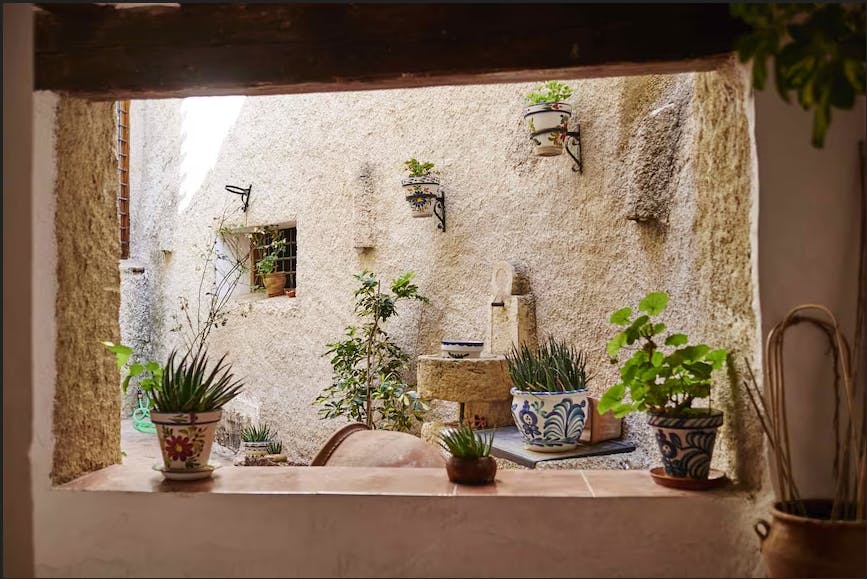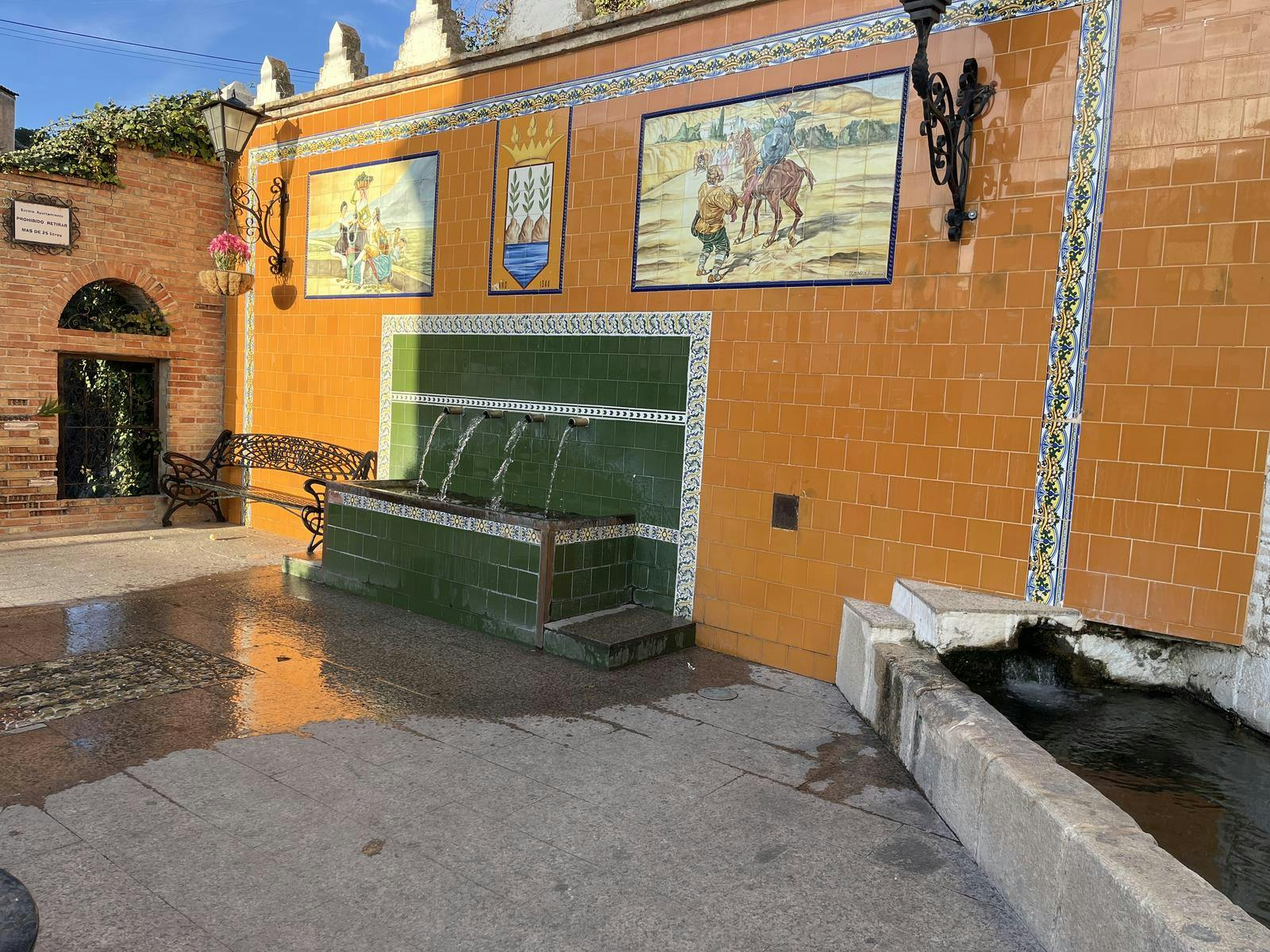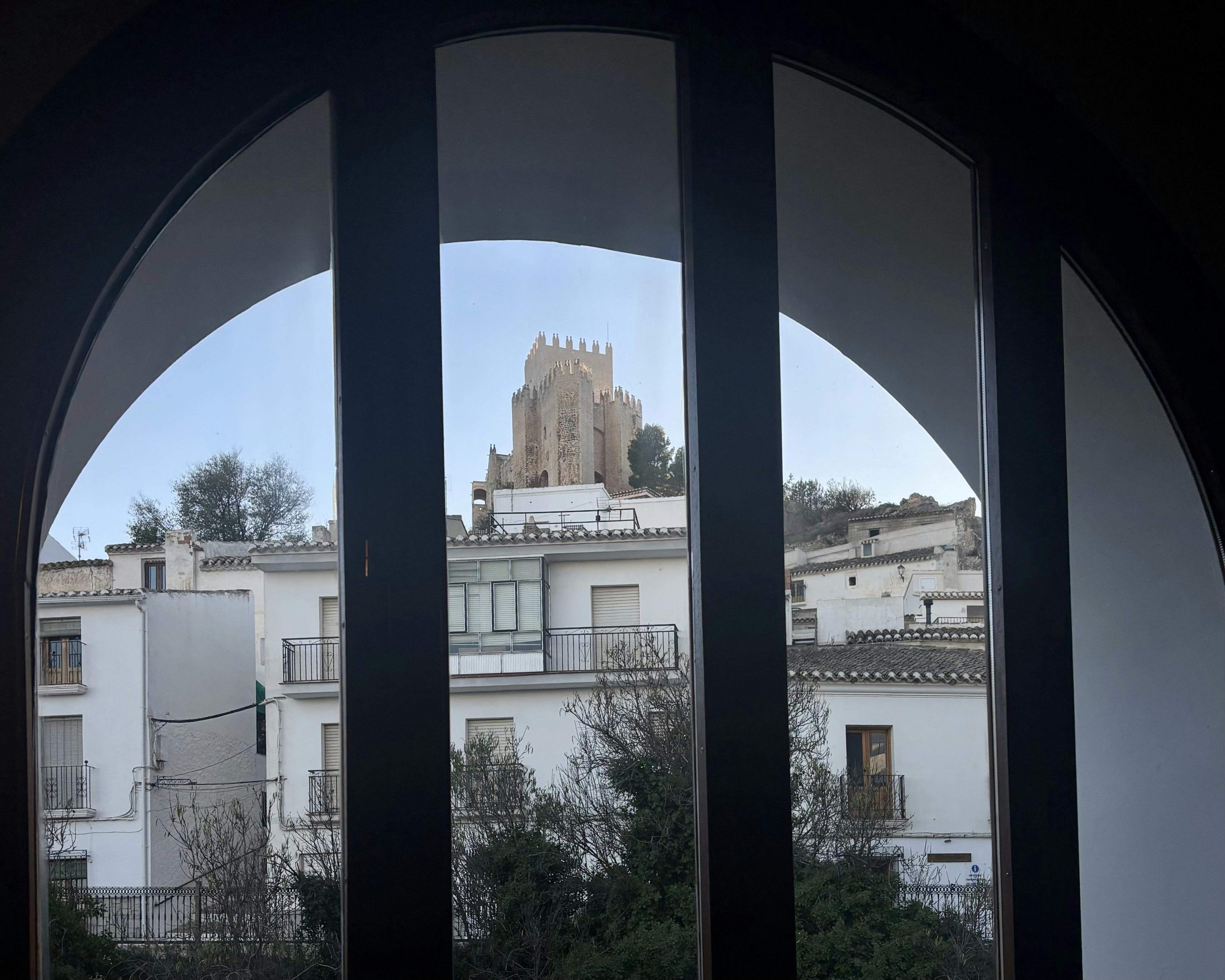Nuestra historia
Each space within La Casa de los Arcos holds a piecce of its history. This building, full of character and tradition, has been carefully restored to preserve its essence and share it with you. We invite you to discover every corner and the stories that make it unique.
La Casa de los Arcos is much more than a hotel, it is an architectural gem with over 250 years of history, one that has managed to keep alive the spirit of Vélez Blanco’s noble houses.
Built in the 18th century, next to the old bridge over the ravine, it was once a family residence and a symbol of local prestige. Its elegant neoclassical façade and the 19th-century renovations reflect the passage of time and the style of each era.
For generations, its different floors housed stables, washrooms, wine cellars, pantries, and reception halls. Today, after a careful and sustainable restoration, these spaces have been transformed into rooms full of history, where original stone, wood, and marble coexist with modern comfort.
The project, carried out by local architects and artisans, respected the original structure, the use of native materials, and the rural character of the building. Every corner, from the courtyard overlooking the Barranco de las Fuentes to the arched dining room, preserves the essence of the past and the warmth of a home with a soul.
Known through time as La Casa del Puente, Casa de los Arcos, or Casa de los Bañones, this historic building remains a living testimony to the history of Vélez Blanco.
Today, it opens its doors for you to experience the unique feeling of sleeping in a place that breathes history and feels like home.
Our hotel is located next to the Barranco de las Fuentes, a site that, throughout time, has served as a hub of communication and a centre of urban life in Vélez Blanco. This place also marked the boundary between the influence of the town’s parish priests and the domain of the Franciscan friars from the Convent of San Luis, reflecting the spiritual and social significance it held in past centuries.
Over the last three centuries, the street where the hotel now stands has changed names several times. In the earliest records, it appears as Calle del Caño or Calle del Caño de Caravaca, names that referred to the ancient water channel that once ran through the area. Between the 17th and 19th centuries, it was known as Calle de las Cruces.
In 1834, after the suppression of the Franciscan convent, it became popularly known as Calle de los Cuatro Caños, until 1852, when it finally adopted its current name: Calle San Francisco, which it still retains today.
As for the land on which the hotel stands, the Book of Memories, which records the commemorative masses celebrated at the Convent of San Luis, mentions that the building was constructed on a charitable foundation established by Doña Mencía Fajardo, daughter of the Marquis, in the year 1592.
At the heart of the hotel lies a space steeped in history, an old wine cellar where time seems to have stopped.
The large clay jars seen in the image were once used to store wine, olive oil, and grains, their shape and thick earthen walls helping to keep the contents fresh and protected from light and changes in temperature. These handcrafted pieces, made by local artisans, are part of the domestic tradition of the Los Vélez region, where homes often included small rooms dedicated to the preparation and preservation of food.
Thanks to its natural temperature and humidity, this space still serves its original purpose and is now used as a wine cellar to store our bottles, keeping the essence of tradition alive.
A place where past and present meet, and where history continues to breathe through the earthy aromas of clay, soil, and wine.






